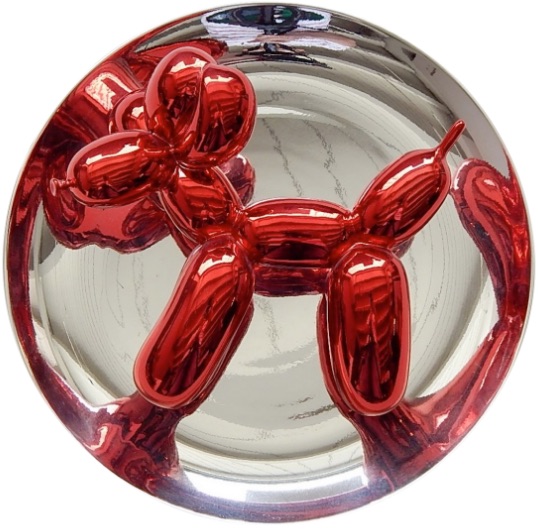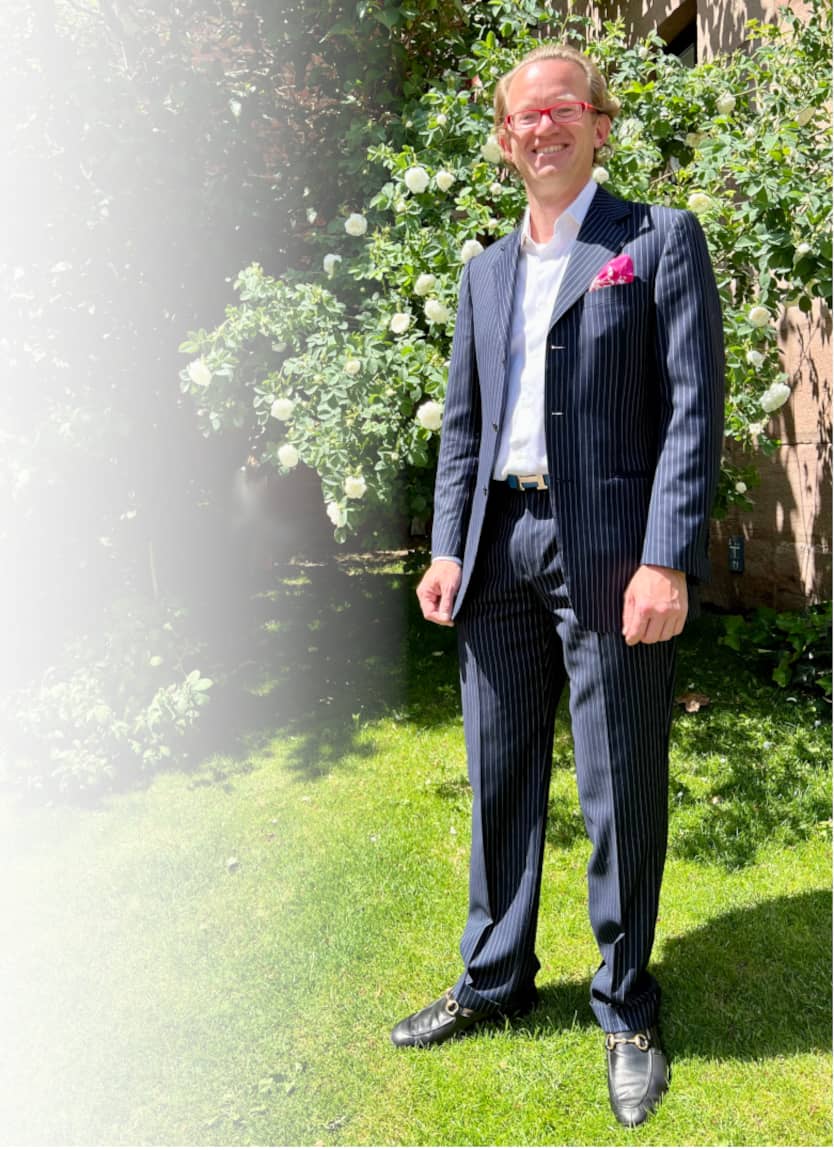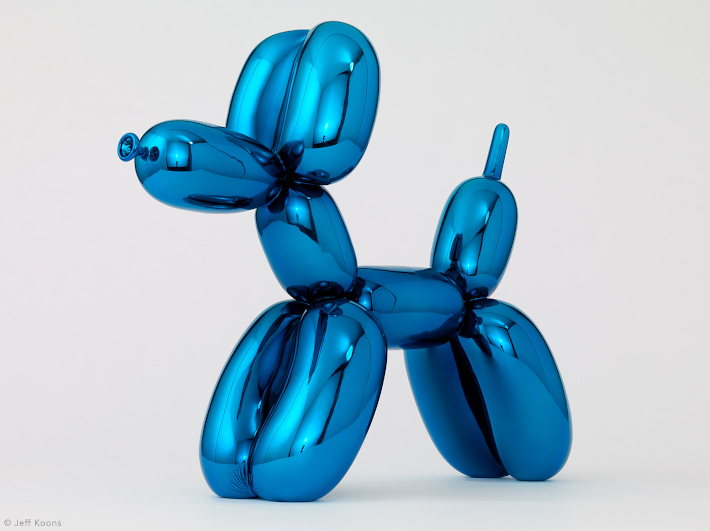
Jeff Koons / Balloon Dog red / Sculpture / edition 2300
| Year: | 1995 |
| Format: | 26,7 x 26,7 cm / 10.2 x 10.2 inch |
| Material: | Porcelain, chrome coat |
| Method: | Sculpture |
| Edition: | 2300 |
| Other: | Sculpture attached to plate. Fired signature of Jeff Koons and hand-written edition number on verso |
Jeff Koons Balloon Dog red

| Year: | 1995 |
| Format: | 26,7 x 26,7 cm / 10.2 x 10.2 inch |
| Material: | Porcelain, chrome coat |
| Method: | Sculpture |
| Edition: | 2300 |
| Other: | Sculpture attached to plate. Fired signature of Jeff Koons and hand-written edition number on verso |
Jeff Koons Balloon Dog
The original, large Balloon Dogs (1994 to 2000) by Jeff Koons come in five colors, blue, magenta, orange, red and yellow. They look like a birthday present for an eight-year-old, but that’s what they’re all about. The Balloon Dogs touch on the idea of celebration. They are worth millions of dollars, as the Balloon Dog (Orange) (1994 to 2000) sold for $58.4 million. The Balloon Dogs (1994 to 2000) by Jeff Koons are part of the series Celebrations, which the artist started in 1993. It consists of a series of sculptures and paintings that deal with the idea of celebration and objects that we would use for celebrations such as holidays or parties, especially birthday parties. Against the backdrop of Koons’ artistic career, the playful yet rather intimidating large balloon dogs are a continuation of his style. Some of his earliest sculptural work comes from the Inflatables series (circa 1970s), which consists of flowers and toys purchased from stores in New York, where he moved in 1977. In the 1980s, he began several exhibitions that showed his turn toward conceptual art. This is evident in his Equilibrium Series (1983), in which basketballs float in distilled salt water in what appears to be an aquarium. Alongside this were posters depicting famous basketball players. In the early 1990s, Koons began what we now know as his signature sculptural works, or, one of the best known of his sculptural works, the Celebration series. These were also inspired by children’s toys and inflatable balloon animals, especially since his son Ludwig was very young at the time. As mentioned earlier, the series included pieces such as flowers, hearts, Easter eggs, and a series of balloon animals. There is something playful about the sculptures and they play with other ideas like life and death and the loss of innocence from childhood that almost turns into a desire for material things and status. When we look at Balloon Dog, we almost want to touch it and feel its apparent softness, but when we get closer, we are confronted not only with its larger-than-life size and luminosity, but also with a hard, reflective surface. Jeff Koons’ artwork has received a lot of criticism in the art world and in the public; there are lovers and haters. One of the most important questions surrounding Jeff Koons’ art is “Is this art?”. The artist himself is very successful and has received considerable sums of money for some of his sculptures. He has also become quite popular with the masses. In 2013, for example, Balloon Dog (Orange) sold for $58.4 million at Christie’s Post-War and Contemporary Art evening auction. It reportedly set the record for the highest price for a living artist. Koons’ Tulips sold for $33.7 million at the same auction.
Between art and kitsch
Born in Philadelphia in 1955, Koons wanted one thing above all: to become rich and famous. After studying art, he worked at the Museum of Modern Art and as a broker in New York for a few years starting in 1976, so that he could finance his works himself. Soon he created the first of his legendary Balloon Animals, and the shooting star of Neo-Pop Art was on the rise. The colorful 1980s came just at the right time for Koons, who cites Marcel Duchamps, Salvador Dalí, Pablo Picasso, and of course Andy Warhol as the most important artists who inspired him. In his works, Jeff Koons processes everyday objects that often have a strong connection to childhood. He imitates them, alienates them, exaggerates them, sexualizes them, or groups them with advertisements, photographs, or comics to create large-scale collages. Since the auction of the stainless steel sculpture Rabbit in 2019, Jeff Koons is again the most expensive living artist.




